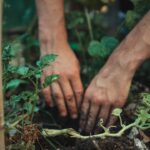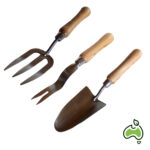5 Tips for Growing Vegetables in Winter
Gardening is a popular hobby that allows people to grow their own vegetables and enjoy the outdoors. While many people associate gardening with spring and summer, it is possible to grow vegetables in the winter as well.
There are several advantages to growing vegetables in the winter, including the ability to grow your own organic produce, extend the growing season, eat fresh, nutritious food, and save money on groceries. Winter vegetable gardening can also provide a fun and productive activity during the colder months.
In this blog post, we will give you some tips and guidance for growing vegetables in the winter. Whether you are a seasoned gardener or just starting out a vegetable garden, these tips will help you successfully grow your own food in the colder months.
5 Tips for Growing Vegetables in Winter
If you want to succeed at growing vegetables in winter, here are a few tips you should keep in mind:
1) Understanding the Winter Climate
Average Temperatures During Winter
The average temperature during winter varies greatly depending on your location. In general, the temperatures are lower than in the spring and summer months, with many areas experiencing frost and even snowfall. In some places, there can be days that reach into the negative 40s and 50s, so it is important to understand your growing area’s specific climate in order to determine the best vegetables for growing.
Hours of Daylight
During the winter months, there is less daylight than in spring and summer. This means that plants have less time to grow and develop, making it important to select vegetables that mature quickly. This is an especially important consideration in growing areas with cold winters, as there is less time for plants to be exposed to sunlight and warm temperatures.
Weather Patterns
In some growing areas, the winter weather can be unpredictable, with unexpected cold spells or snowstorms. It is important to understand the typical winter weather patterns in your growing area so that you can plan for extreme temperatures and unpredictable weather conditions.
Frost and Freeze Protection
Frost and freezes can occur during winter months, especially in growing areas with cold winters. In order to protect your growing vegetables, you may need to take measures such as mulching or cold frames. It is also important to understand the best timing for planting and harvesting your vegetables so that you can avoid frost and freezes.
2) Choosing the Right Site
Location with Adequate Sunlight
One of the most important elements to consider when growing vegetables in winter is the amount of sunlight available. In order to get the best results, you need to select a growing area that receives at least six hours of direct sunlight each day. If growing in a greenhouse, you may need to supplement natural light with artificial lighting.
Proper Drainage
It is essential to ensure that the soil in a veggie garden contains adequate drainage. Poor drainage can lead to standing water, which will cause the soil to become waterlogged and lead to root rot. If you are growing in containers, make sure they have enough holes for drainage.
Protection from Wind
Vegetables growing in windy conditions will dry out quickly and may become damaged by the force of the wind. It is important to choose a growing site that has some natural shielding from the wind, such as shrubs, trees or walls.
Raised Beds or Cold Frames
Raised beds are a great way to create growing conditions that are ideal for growing vegetables in winter. These garden beds allow you to control the soil temperature and drainage by adding compost or mulch, while cold frames provide additional protection from harsh weather.
Both can help protect plants from wind and frost damage. Additionally, growing vegetables in raised beds or cold frames will make them easier to access for harvesting. By properly planning and choosing the right growing site, you can enjoy delicious winter vegetables all season long.
3) Selecting Winter-Hardy Vegetables
Leafy Greens
When growing vegetables in winter, leafy greens are a great choice. Varieties such as spinach, kale, arugula and lettuce can survive colder temperatures and are great for salads or stir-fries. Most leafy greens mature quickly, so you can enjoy the harvest in just a few weeks.
Brassicas
Brassica vegetables, such as broccoli and cauliflower, are cold-weather favourites. These veggies can survive temperatures in the 20s and 30s, making them ideal for growing in the winter months.
Root Vegetables
Root vegetables, such as carrots and potatoes, are also great for growing in winter. These vegetables are hardy and can be harvested after the first frost.
Squash and Pumpkins
Squash and pumpkins are ideal for growing in winter, as they can tolerate temperatures as low as 20°F. These vegetables will keep for several months after harvesting and make a great addition to soups or stews. To plant seeds, you can start with a seed packet and potting mix indoors and then transplant the growing plants outside as temperatures warm.
Over time, some plants will start producing their own seed. If you save these seeds, you can use them to start growing vegetables the following winter.
4) Preparing the Soil
Adding Compost
Adding compost to your growing area is a great way to improve soil fertility and provide vital nutrients for growing vegetables in winter. Compost adds organic matter to the soil, which helps to retain moisture, increase drainage, and enhance nutrient availability. It also increases the microbial activity of the soil, which improves your growing area’s ability to support healthy plant growth and create a good environment to sow seeds.
Enhancing Soil Fertility
Adding a fertilizer, such as manure or compost tea, will help boost the nutrient levels in the soil and ensure that your vegetables receive all of the essential nutrients for growing during winter. It is also important to monitor pH levels and adjust as needed.
Improving Soil Structure
Soil structure should be improved before growing vegetables in winter, as this will help ensure adequate drainage and prevent soil compaction. Adding organic matter to the soil can help improve aeration, water-holding capacity, and nutrient availability. You can also use a seed-raising mix or grow bags for growing in containers.
Testing Soil pH
Before you plant vegetables in the winter, testing the pH of your growing area is essential. Most vegetables prefer a slightly acidic soil with a pH between 6.0 and 7.0, so it’s important to check the pH level of your growing site and adjust as needed. A soil test kit can be used to help determine the acidity or alkalinity of the soil. Once the pH levels have been adjusted, you can begin planting vegetables in your growing area.
5) Proper Watering Techniques
Consistent moisture levels
Keeping the vegetable garden soil consistently moist but not overly wet or saturated is key to growing healthy vegetables and avoiding issues such as root rot or wilting foliage. It’s important to give your veggie garden a good soaking once or twice a week, depending on the weather and soil type.
Avoiding over-watering or under-watering
Too much water can drown out the roots of your plants and deprive them of oxygen, while too little water can cause them to become stressed or even die. To ensure that your veggie garden is getting an adequate amount of moisture, use a soil tester or moisture meter to measure the water content at different depths in the soil.
Use of mulch to retain moisture
Using a layer of organic mulch, such as straw, leaves, grass clippings, or shredded bark, can help to keep the ground moist by creating a barrier that prevents evaporation. It also acts as an insulator to keep the soil cooler in hot weather and can help control weed growth.
Be sure to add a new layer of mulch each growing season, as it will break down over time. Using these techniques can ensure that your veggie garden gets the right amount of water and stays healthy throughout the growing season.
6) BONUS TIP: Using Season-Extending Techniques
Row covers or cold frames
Row covers and cold frames are simple structures that can be used to protect plants from the elements and extend the growing season. They can be made from various materials, including plastic, glass, or fabric, and are placed over the plants to create a microclimate that is more conducive to growth.
Cloches or hot caps
Cloches and hot caps are small, individual structures that are placed over individual plants to provide protection and warmth. They can be made from a variety of materials, including glass or plastic, and are an excellent way to extend the growing season for individual plants or small groups of plants.
High tunnels or low tunnels
High tunnels and low tunnels are larger structures that can be used to grow a wide range of crops in the winter. These structures are typically made from metal or PVC piping and covered with plastic or fabric. They can provide a much larger growing area than row covers or cloches, making them ideal for large-scale winter gardening.
Artificial lighting for supplemental illumination
In areas with short daylight hours during the winter, artificial lighting can be used to provide supplemental illumination for plants. LED grow lights, or fluorescent lights, can be used to extend the amount of light plants receive, promoting growth and increasing yields.
Conclusion
Growing vegetables in the winter can be a challenging task, but with proper preparation and care, it is possible to successfully grow delicious produce even during the colder months.
At Gardening Direct, we offer growing tips, advice and products to help make gardening an easy and enjoyable process for you. To get started with growing your own vegetables at home, check out our veggie garden starter pack here.


